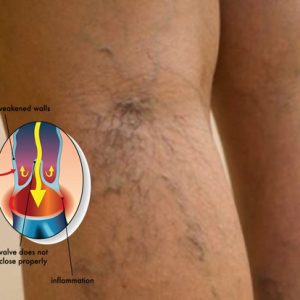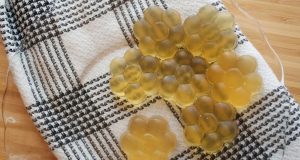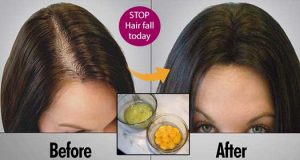Definition Varicose veins, varicoses, varicosities are all essentially the same, they occur when the veins become enlarged, overfilled with blood. They are often painful with purple or red color, frequently swollen.

It is a very common condition, 50% of U.S. citizens above 50 years have this condition, especially women. Mostly, varicosities form on the lower part of the legs.
Causes
If the veins aren’t properly functioning, the result may be varicose veins. Veins are built on one way valves that prevent the blood from going backwards, and if these valves aren’t working then blood starts to accumulate in the vein instead of going to the heart. Varicosities frequently form on the legs, because the distance from the heart is the largest, also having gravity pulling down.
Few potential factors:
- (usually) Congenital chronic heart valve conditions
- Pregnancy and menopause
- Standing for a long time
- Midsection body pressure (abdomen)
- Obesity, which adds weight to the body and increases the pressure on the legs
Symptoms
The basic symptoms are very visible, deformed veins, mostly on the legs. Pain, heaviness and swelling are also frequent and sometimes discoloration or ulcers around the ankles.
Diagnose
The doctor will examine the visible symptoms while you stand and sit, also asking about pain or different sensations.
An ultrasound may be desirable to see blood circulation. Ultrasound uses high-frequency waves and is painless, while at the same time making visible what is happening inside the veins.
Not so often angiogram is used to further explore the issue. The doctor may inject a special dye into the legs and take X-rays of the area, whereby the dye appears on the pictures, giving a better view on blood flow.
These test can help for the right diagnose and see if there are blockages or blood clots.
Treatment and Prevention
Most doctors will just advice you to change the lifestyle before using more aggressive treatment.
The following changes can aid in prevention of varicose veins:
- Avoid being exposed to the sun for too long
- Avoid standing for a long time
- Healthy weight
- Try not to keep your legs crossed for too long
- Exercise (leg strength)
If you are already affected by this issue, take note of the next steps, and keep your legs above the ground as much as possible.
Compression
Upon doctor advice you may have to wear special compression pantyhose or stockings that put good pressure on the legs, improving the blood flow. The level of compression may vary, but most of these are available at drugstores.
Surgery
If the above aren’t helping and the pain is strong, your doctor may advice a more invasive option.
Vein stripping is a surgical operation requiring anesthesia, with a time of recovery of 3-6 weeks.
The surgeon removes the varicose veins by incisions only if the problem is causing severe pain and affecting the overall health. This type of surgeries are not as common nowadays because of many new options.
Other Treatment Options
Lasers or radiofrequency can be utilized to remove the veins or improve blood flow. These procedures may result in immediate bruising or swelling. However, in the long run the legs appearance is much better.
You can see latest treatment option in the following video
https://www.youtube.com/watch?v=jP3j-axZm7k














